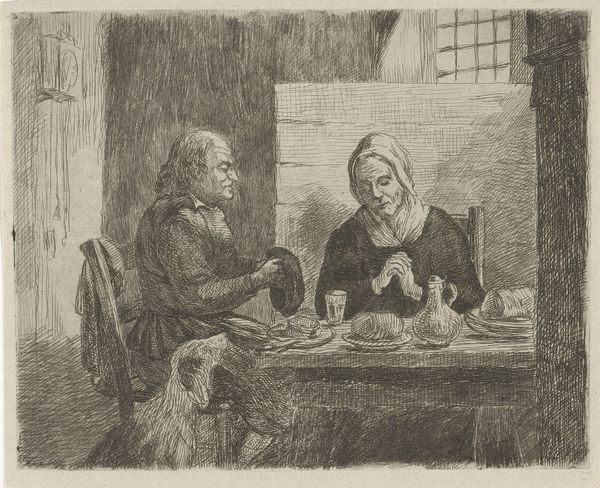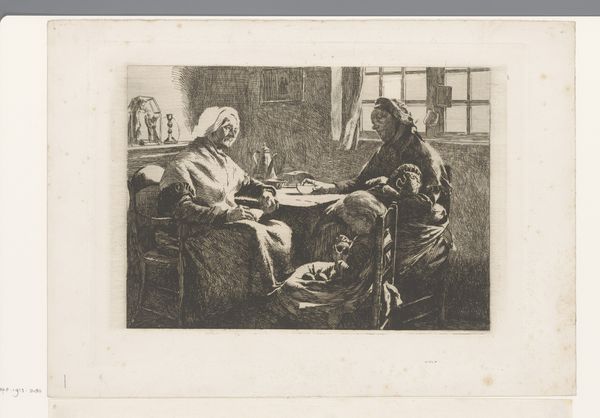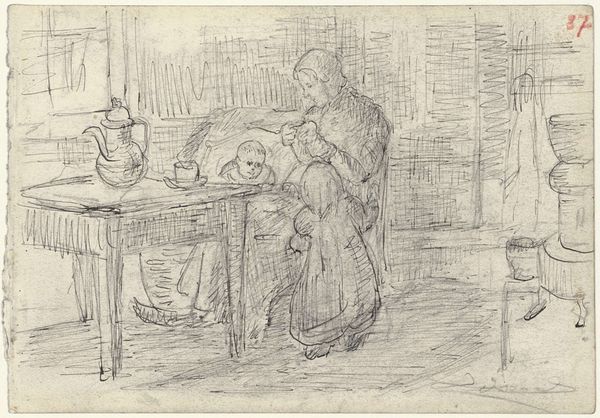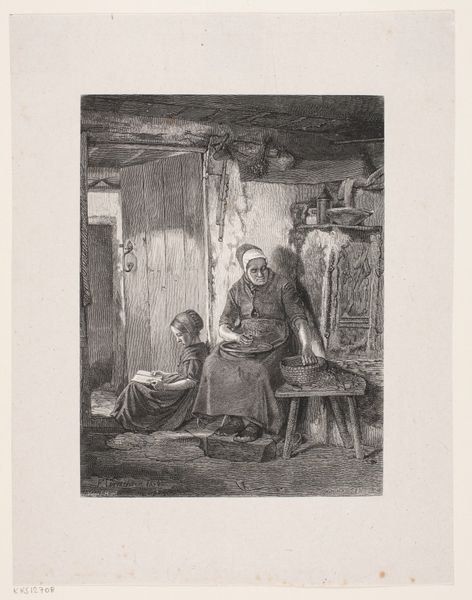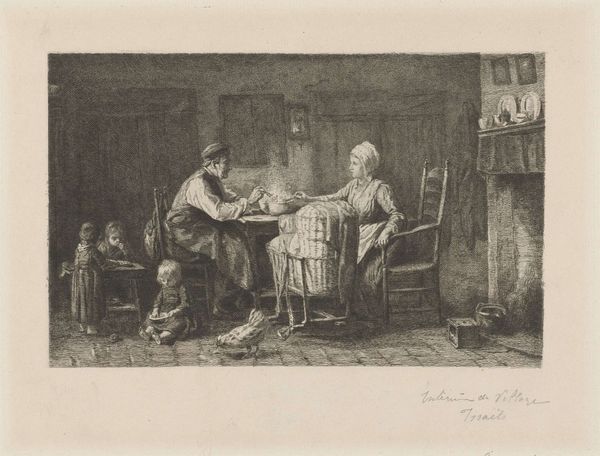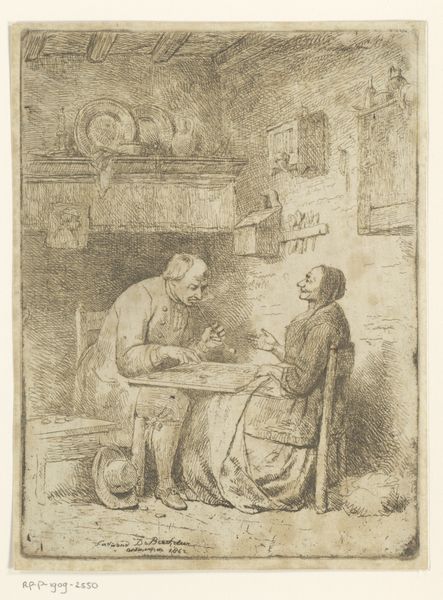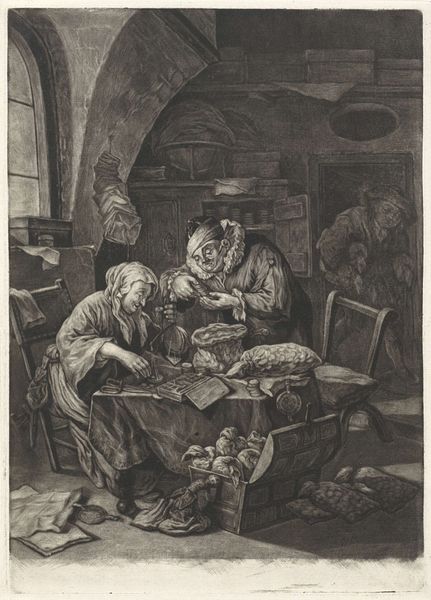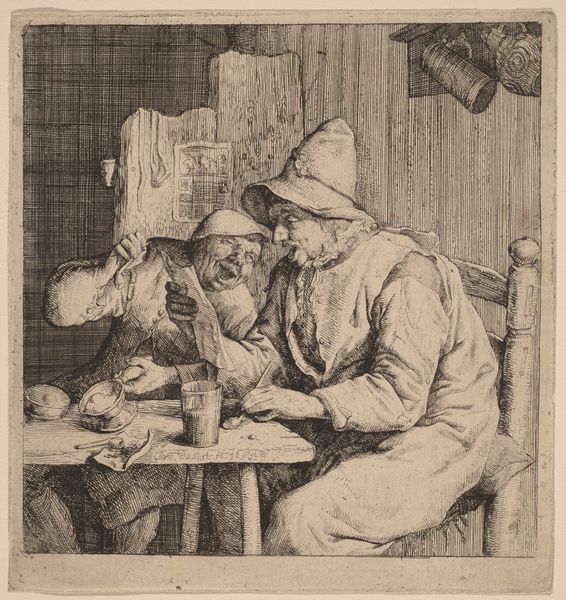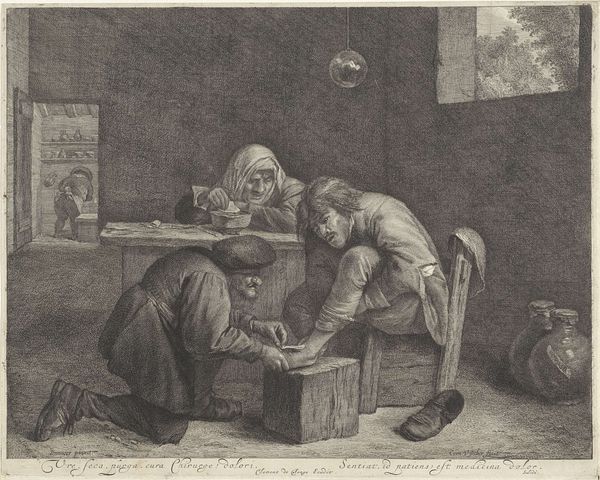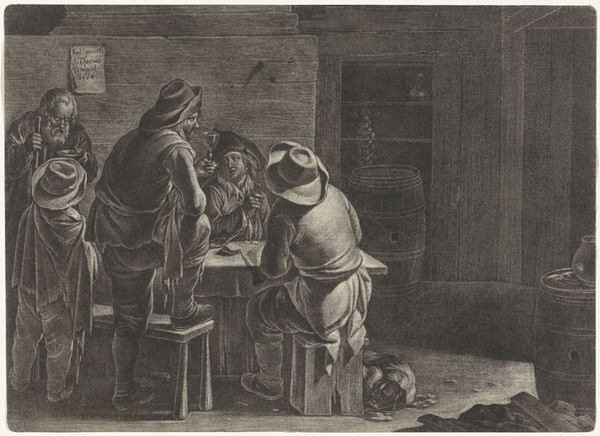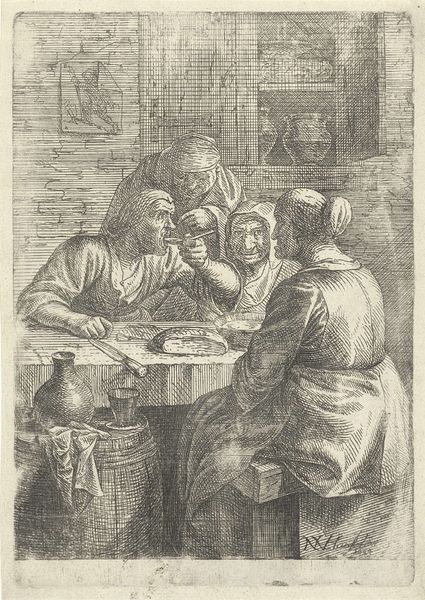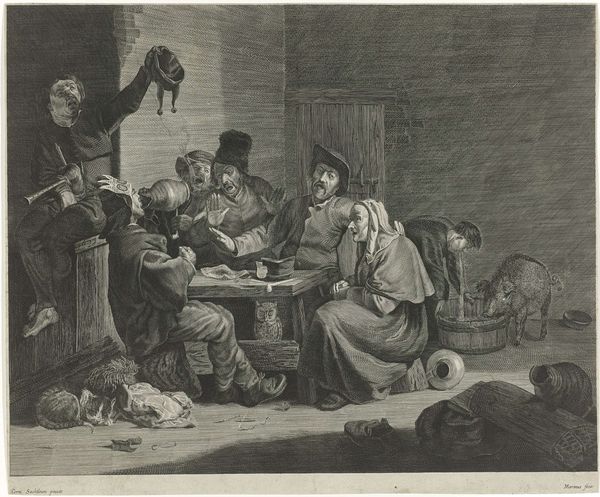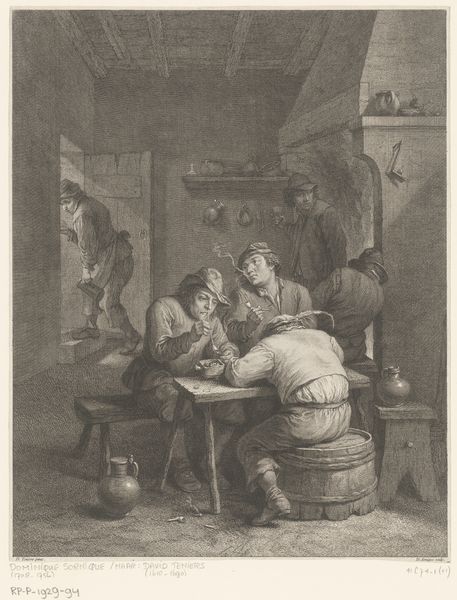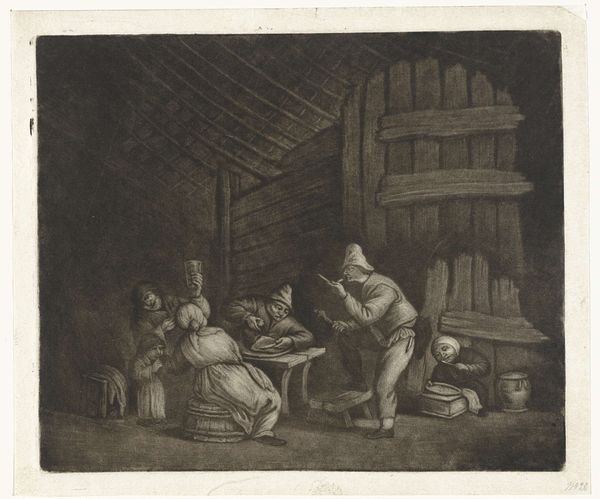
etching
#
portrait
#
medieval
#
narrative-art
#
pen sketch
#
etching
#
pencil sketch
#
dog
#
line
#
genre-painting
#
realism
Dimensions: height 103 mm, width 125 mm
Copyright: Rijks Museum: Open Domain
Curator: We’re looking at an etching called "Gebed voor de maaltijd," or "Prayer Before Meal," dating from somewhere between 1814 and 1859, credited to David van der Kellen. It’s part of the Rijksmuseum's collection. Editor: It strikes me immediately as melancholic. The subdued lighting and the figures' expressions create a sense of quiet solemnity. Is it the depiction of everyday life that reinforces that atmosphere? Curator: Absolutely, but let’s look at it through the lens of domesticity and labor. Notice the husband appears to be repairing something. There's a realness to this that contrasts sharply with the often-romanticized views of the family. What social narratives is it challenging, intentionally or not? Editor: I see. Beyond the direct representation, observe how the woman's clasped hands mirror a posture of humility and gratitude—recurring themes in Christian iconography, reflecting specific moral values linked to domesticity. It is her faith that represents, no doubt. Curator: That's fascinating. How do you interpret the dog's presence in terms of symbolic meaning within a narrative of marginalization? Could it reflect a desire for a society without discrimination? Editor: Intriguing observation! Traditionally, dogs signify loyalty and companionship. Perhaps, its presence indicates a longing for faithfulness within an environment of economic precariousness, as dogs rely entirely on human means for their well-being. Curator: So it becomes more than just a quaint depiction of daily life; it's a social commentary imbued with complex religious symbolism and moral commentary on domestic gender roles of that time. Editor: Precisely. Looking at it now, the humble, everyday object acquires meaning. Curator: Thinking about our previous conversation, the image makes me contemplate labor, faith, and marginalization intersection in art history. Editor: And I'm now seeing how familiar symbols intertwine to create complex meanings that resonate beyond a singular moment in time.
Comments
No comments
Be the first to comment and join the conversation on the ultimate creative platform.
